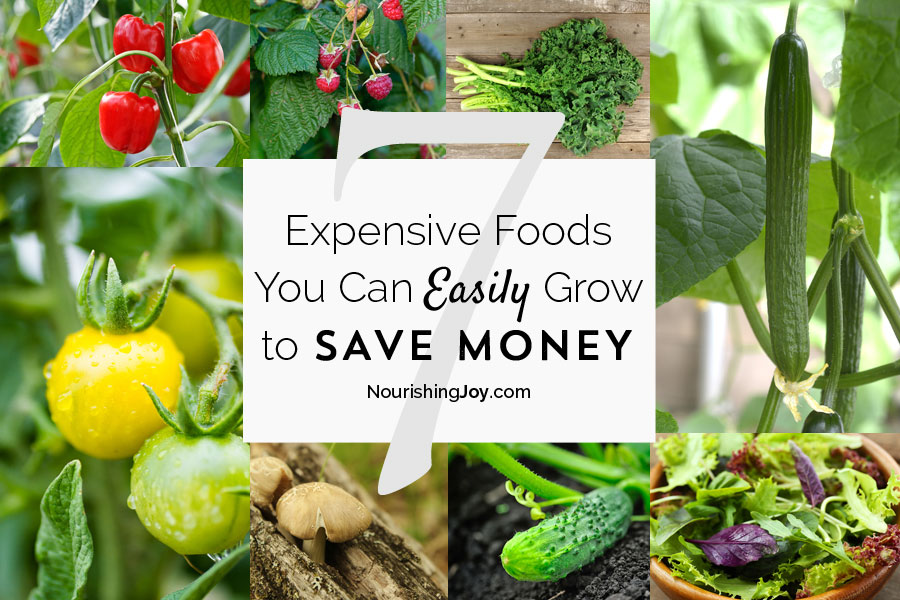7 Expensive Foods You Can Grow to Save Money
This post may contain affiliate links, including those from Amazon.com, which means we earn a small commission off your purchases. And here's the thing: We only mention services and products that we think are truly worth your attention, whether they're free, paid, or otherwise. This site relies on YOUR trust, so if we don't stand behind a product 110%, it's not mentioned. Period.
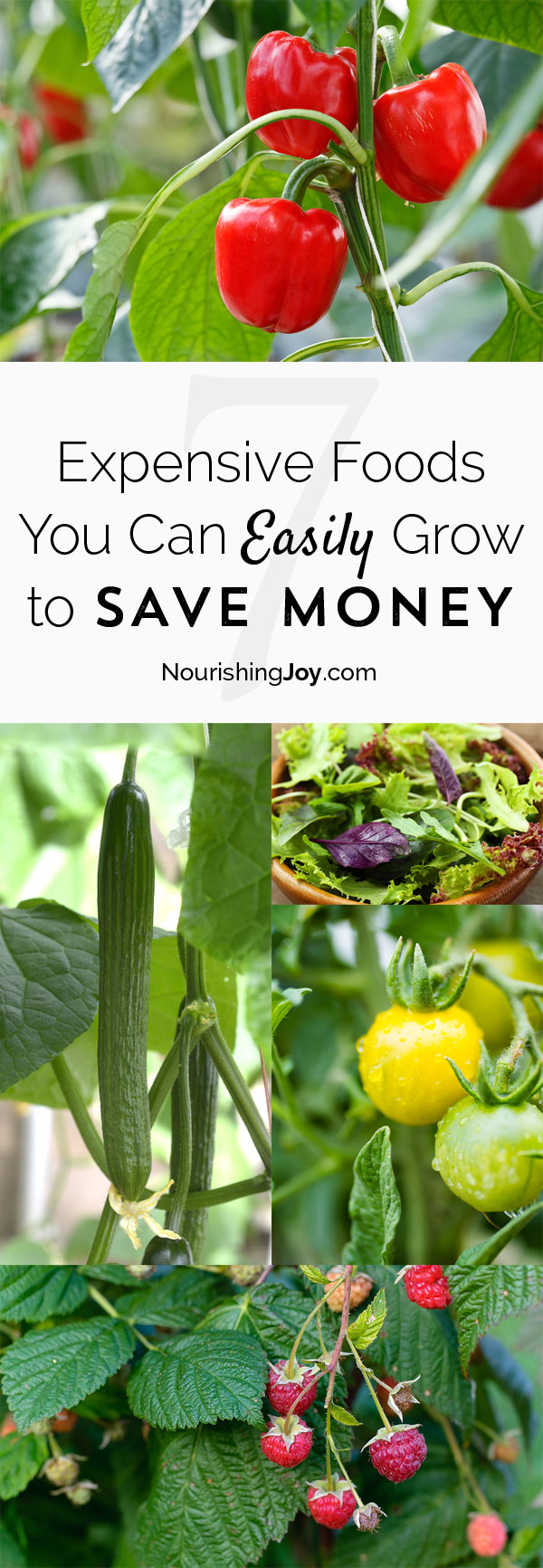


Advocates of growing your own food have long touted the ability to save money on groceries as one of the best reasons to grow a garden each year.
While I certainly agree, I also know first hand that there are years that I have gotten so excited about gardening that I've planted lots of food, but when I look at our actual savings, it hasn't added up to all that much.
Now, don't get me wrong – there are LOTS of other benefits of growing your own food, such as eating super-fresh food, knowing your food is organic, the sustainable benefit of not purchasing food that was trucked thousands of miles, teaching your kids where their food comes from, and on and on.
But if we're looking just at the money-saving aspect, I realized I needed to get a little more savvy. So I started making a list of the foods that are most expensive on a regular basis in our area, and then seeing if we could grow those specific plants in our climate.
I settled on seven that added up to the most savings, so of course I wanted to share them with you!
And if these items aren't expensive in your area, then by all means, switch it up and find out how to grow the ones that benefit YOU most!
Oh, and almost all of these produce beautifully in a container garden, so you can even grow these on a balcony or patio or in a fold-up garden, if you need!
Please remember that this is a basic guide to get you started. Since growing varies so much according to area, talk to your neighbors or the helpful staff at your local nursery to find out what methods work best in your area, as sometimes little tweaks can make a BIG difference in how much fruit you actually get from each plant.
Looking for other gardening resources?
Check these out!
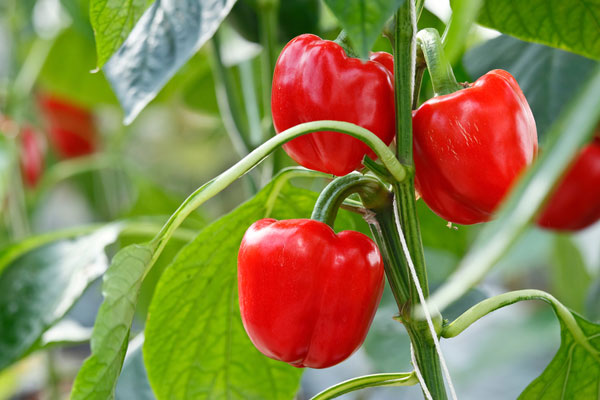


Bell Peppers
In our family, we could easily eat 1 dozen peppers a week. We love them in stir-fries, on pizza, in homemade pasta sauce, in Greek salad, in the slow cooker with beef, I pack them in lunches, and they're usually offered at meals as crudité with dip.
But at regular prices, if I buy non-organic peppers, we could spend more than $20 a week just on peppers! And spending close to $100 a month on peppers is just not an acceptable part of the budget.
Thus, growing them is a no-brainer, provided we can find a warm and sunny enough spot in our temperate climate. Thankfully, planting them directly in front of a south-facing wall or on a south-facing slope has worked well.
Find bell pepper seeds here or visit your local nursery for seedlings.
Growing Tip: Heat is key to actually getting your plants to produce fruit – and especially if you want your peppers to turn from green to red. So even if your only available space is shaded during part of the day, be sure that it's in a location where heat will continue to radiate, such as in front of a cement foundation or a large rock. (That said, full sun is still best.)
You might also want to try covering the soil around each plant with something black to help hold in heat. Organic commercial growers use black plastic (you could replicate this with even a piece of black plastic garbage bag), or you could try black charcoal or even black sand. You can do this right away if you've planted a seedling, but if you're starting from seed, you'll want to wait until the plant has grown to a few inches tall and has a sturdy stem. (Or, if you're planting a container garden, consider using a black planter, like this decorative one or this more economical one.)
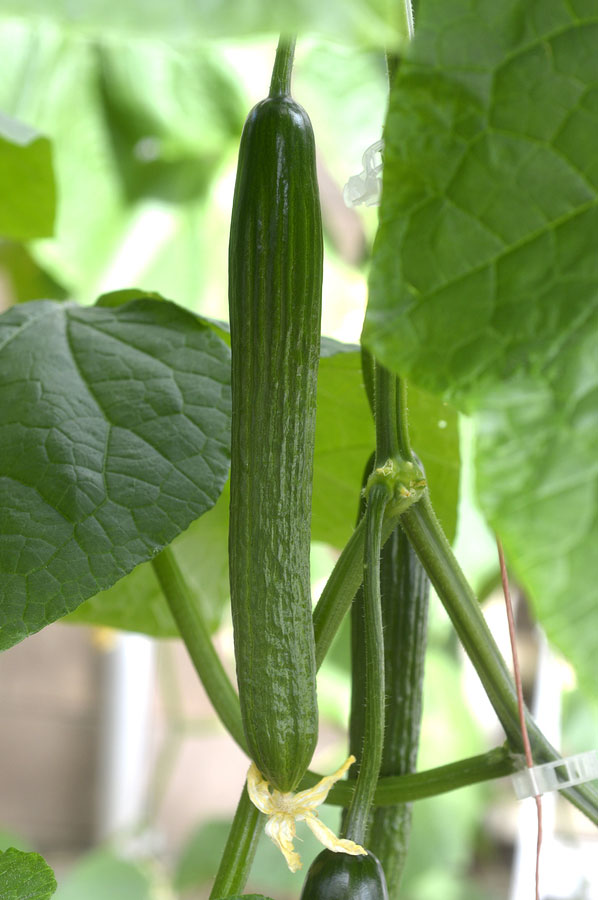


Long English Cucumbers
Long English cucumbers are another item that we can eat faster than we can bring them in the house. They're sweet, they're crunchy, and they're everybody's favorite.
And growing them is easier than it seems. In fact, I wouldn't have even thought to try except that my husband was working on a farm where a career cucumber expert happened to be on staff and taught my husband a few tricks of the trade, which made us realize that it's not difficult.
The secret for home-growing is giving them enough room and support to climb, and being diligent to trim the leaves that are touching the ground after they get large enough to minimize rot and disease, as well as to focus the plant's energies on fruit production.
Definitely try Long English cucumbers this year! That first crunchy bite will have you sold on growing them forever. 🙂
Find Long English cucumber seeds here or visit your local nursery for seedlings.
Growing Tip: Give Long English cucumbers plenty of support to climb. Chain link fencing and other strong materials work well for this! Also, while you certainly can do Long English cucumbers outside, they do best in a greenhouse-like atmosphere, meaning diffused light and steady warmth, so if you are able to plant them in an area where you could also slant some plastic over them at least six feet off the ground (as they grow tall AND you want to be able to get to them throughout the season), that would be ideal, but if you can't, don't sweat it.
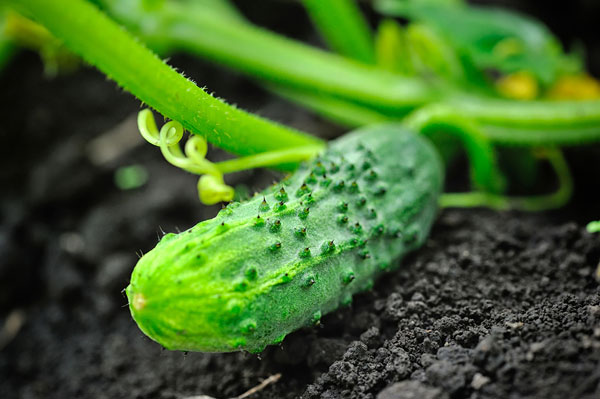


Pickling Cucumbers
Pickling cucumbers are another where it's just cheapest and easiest to have the cucumbers on hand when you're ready to pickle.
Pickling cucumbers also like to climb, but they can trail along the ground (if they'll be safe from other creatures who enjoy cucumbers too)!
Find pickling cucumber seeds here or visit your local nursery for seedlings.
Growing Tip: Provide lots of space for pickling cucumbers and pick often to ensure you end up with similar sizes of pickles.



Berries
Buying berries adds up quickly! The thing with growing berries, though, is that most berries take a year to establish themselves, so there's not much crop the first year. After that they improve year after year.
For that reason, I recommend growing both annual and perennial berries. Plant several canes which will begin to produce NEXT year, as well as plenty of berries like strawberries that will give you an abundant crop THIS year.
As for the berry canes, I highly recommend a mix of golden raspberries, red raspberries, and blackberries (preferably NOT Himalayan, as they will take over everything).
For bushes, blueberries and honeyberries are popular – and certainly delicious.
(And please note – while the links below are helpful, if you have a friend who has a large stand of berries, asking if you might pull up a cane or two is a much better way to go. Berries put out runners like crazy and you can grow a patch starting from just a few canes! I'll forever be grateful to my dear friend Tova for letting us cart off her golden raspberry canes in plastic grocery store bags when she was wanting to redesign her garden a few years ago – they have produced gallons upon gallons of berries for us.)
Find golden raspberry canes here.
Find red raspberry canes here or order them in a gallon pot if you don't have garden space.
Find thornless blackberry canes here.
Find strawberries starts here (although I recommend finding these as starts at a nursery).
Find grape vines – red seedless, green seedless, blue, or Concord (growing grapes has the added advantage of providing grape leaves to keep your pickles super-crisp when you lacto-ferment them!).
Growing Tip: The important thing with berry canes and bushes is to make sure they get rooted well. Once they get firmly established, you'll have trouble getting rid of them, but if they don't root in the first place, they'll die. Plant their root ends several inches down in the soil and be diligent for several days about keeping them moist. You could also set them in homemade root stimulant for a day or two to help get them started, if desired. Berries want some sun, but whether it's full sun or partial sun is fairly flexible.
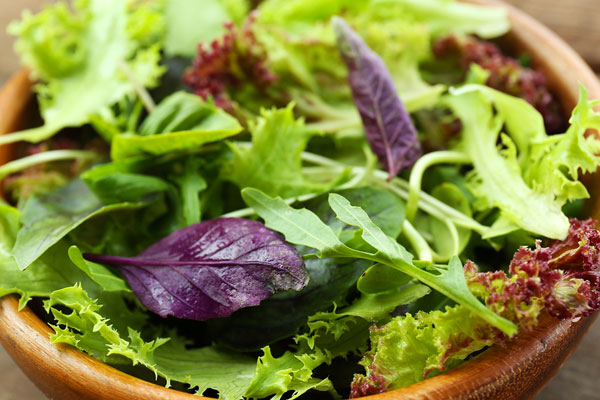


Spring Mix / Mesclun Mix
Lettuce isn't expensive, but I love the fancy mix of baby greens for salad, and buying THAT in a clamshell is most certainly expensive, especially the organic variety.
However, the beautiful things about growing greens – especially baby greens – is that they grow quickly and once you cut them, they just keep on growing, so you can harvest again from the same plants every few days and have a couple of months of eating from one crop.
Find spring mix seeds here or visit your local nursery for seedlings.
Growing Tip: Lettuces absolutely do not like heat or direct sun and will turn bitter the moment they think they're in danger. So plant your lettuces in a place with filtered sunlight for consistent, sweet leaves. You can even do this inside, like juice bars grow their wheatgrass. Also, I recommend planting a new crop every 2-3 weeks so that by the time one crop has been harvested multiple times and is mostly finished, another crop will just be coming into its peak. This way you can have delicious salad for several months of the year.
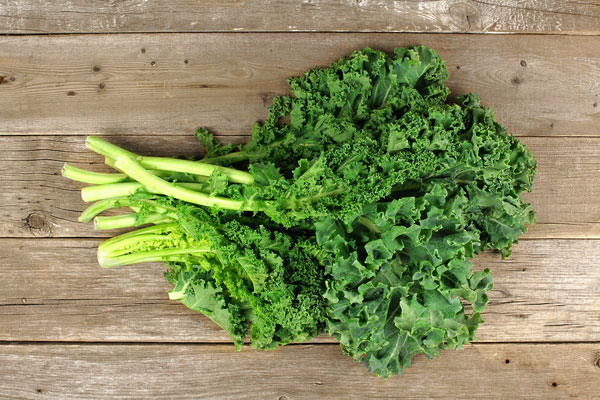


Kale
We make lots of green smoothies and buying the kale for our smoothies most definitely adds up! So kale is a “must have” in our garden.
My favorites for smoothies and juicing are curly kale and Red Russian kale, but for salads I absolutely love Lacinato kale, also referred to as Tuscan kale, dinosaur kale, or black kale.
Find curly kale seeds here or visit your local nursery for seedlings.
Find curly Siberian kale seeds here.
Find Red Russian kale seeds here.
Find Lacinato kale seeds here.
Growing Tip: Avoid planting kale too early, as leaves can sometimes get hard and bitter when heat arrives if they were germinated in cool temperatures. Instead, plant in early summer. (Or plant double the amount and snip baby kale every few days off of one crop while waiting for the other to come to maturity.) And surprisingly, kale is actually at its best AFTER frost arrives in the autumn – the leaves get sweeter and more tender! We've actually over-wintered kale on multiple years and picked it fresh all winter long with great success. As long as the temperatures don't dip too far below 20°F, it should be fine.
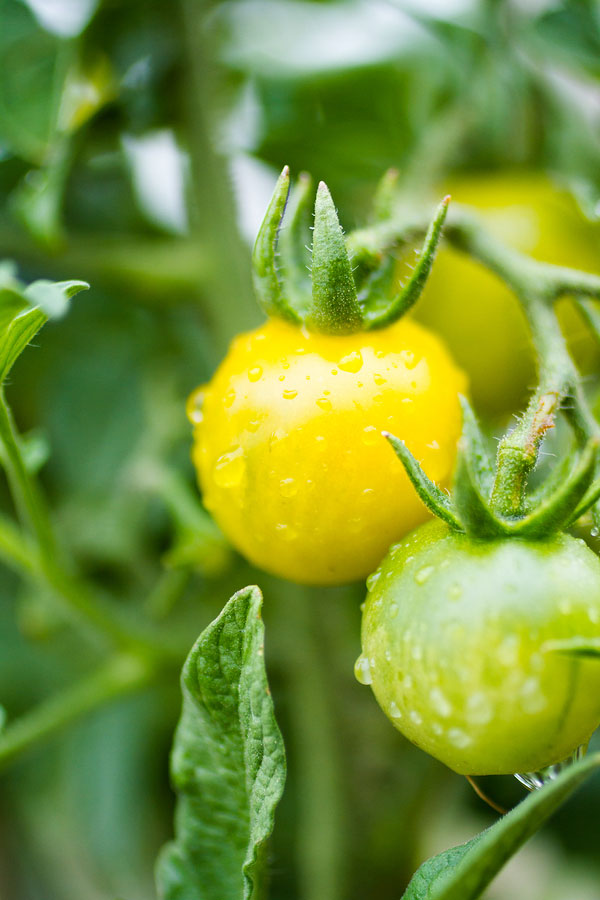


Tomatoes
Tomatoes range wildly in price, so sometimes it's absolutely, totally worth it to grow your own and sometimes it's just not. However, what's best is that you can grow several varieties – and you can grow vast quantities so you've got plenty to turn into canned tomatoes and pasta sauce for the winter.
My recommendations: grow lots of grape or cherry tomatoes, an overwhelming amount of plum paste / Roma-style tomatoes (because they're very versatile), and a handful of large slicing tomatoes, just for slicing to put on sandwiches and burgers.
Find cherry tomatoes here or visit your local nursery for seedlings.
Find Roma-style plum tomatoes (aka “paste tomatoes”) here.
Find heirloom large slicing tomatoes here.
Growing Tip: Tomatoes are like cucumbers – they like to climb, they need support, and they do best with sun and heat, so plant them near each other, if possible. Also like cucumbers, they do best when they're pruned a bit. For best fruit yield (and best plant health), focus on having just one strong stem that yields fruit. You can do this same thing with the cucumbers too, and Fine Gardening has a good photo to show the process.
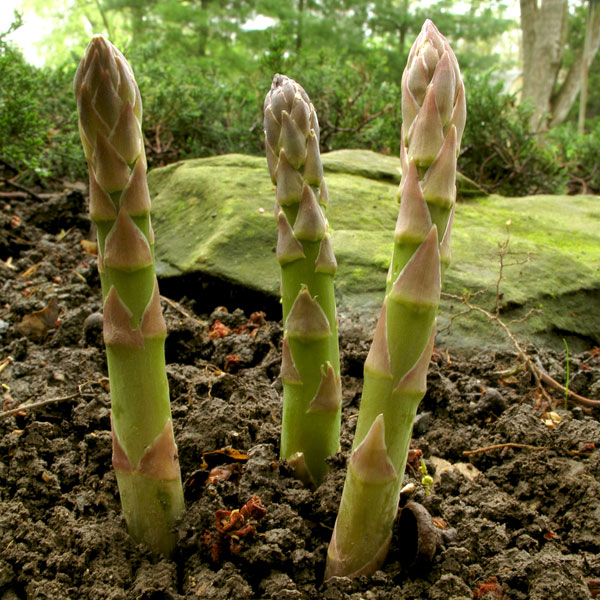


And an eighth, bonus item:
Asparagus
I haven't actually planted this one yet, because it takes 2-3 years to be ready to eat and then is a permanent plant and we haven't been in a permanent housing in the last few years. But I love love love asparagus and it's definitely expensive, so I'd love to have a ready supply poking up each spring! (And you can purchase asparagus roots that are already two years old, so there is a shortcut method here!)
Find 2-year-old asparagus roots here.



And last, if you want to take saving money by growing your own food to a whole ‘nuther level, here are a few additional ideas:
Raise your own chickens. Even with only three hens strutting around our yard, we have plenty of eggs for our needs, so you don't need many! If you're raising chickens for the money-saving aspect, you really do need to be in a place where the hens can have plenty of grass, bugs, and forage – otherwise all your savings will be spent on feed and scratch. But if you've got a bit of room for them to roam, it's absolutely worth it!
Grow your own mushrooms. This sounds difficult, but it's not! Find a freshly-cut hardwood log, grab some mushroom spore plugs, and watch this tutorial. Or… buy a ready-to-go DIY mushroom kit. Not NEARLY so cost effective (in fact, it's significantly more than just buying the mushrooms), but it's fun for kids to watch them grow and you get mushrooms in a couple of weeks rather than waiting a year.
Grow your own fish. Even if you don't have a pond in your back yard (or even a back yard, for that matter), there are a few simple ways to ways to grow both your produce and a reasonable number of fish all in one system without producing any waste and without requiring regular inputs. It's rather brilliant, actually, and while certainly more involved than just setting up a garden, it's not rocket science – and anyone can do it. This tutorial at inhabitat gives a really good overview of what an aquaponic system is and what's involved. In terms of $$$ savings, it requires a bit at the outset, but depending on how you build it and use it, can save you serious money after just a season or two.
What have I missed? What's expensive in your area that you would prefer to grow?

